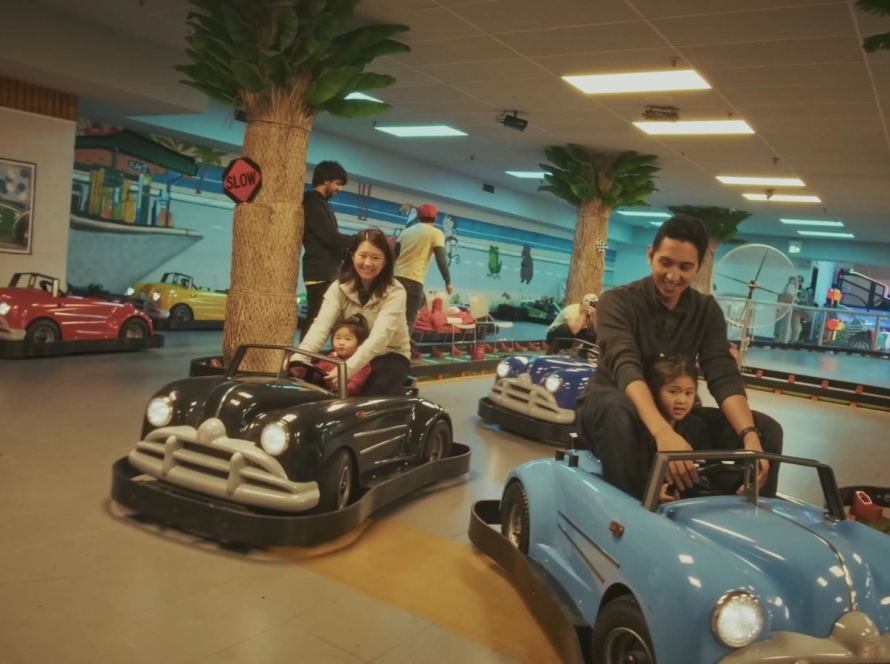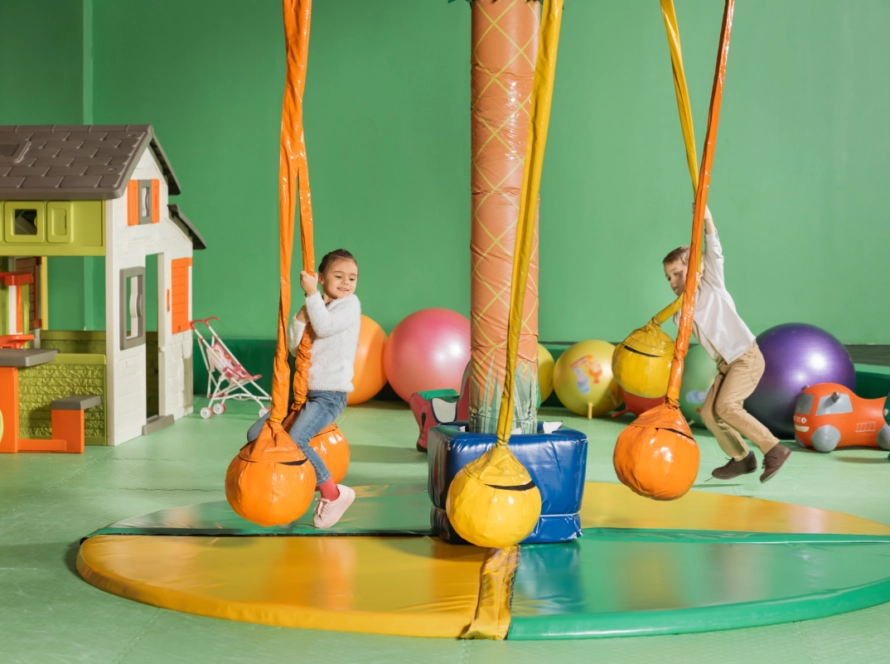Every parent knows the importance of keeping kids active, but what happens when playing outside isn’t an option? Maybe it’s pouring rain, the playground is closed, or you just don’t have access to a big outdoor space. That’s where indoor play becomes a lifesaver—not just for keeping kids entertained, but for helping them grow physically, too.
Surprisingly, indoor play can be just as effective as outdoor play in promoting physical development. From improving balance and strength to fine-tuning hand-eye coordination, indoor activities offer plenty of opportunities for kids to build the skills they’ll use for the rest of their lives. Let’s break down how indoor play contributes to a child’s physical development and why it’s so valuable.
Why Physical Activity Is Crucial for Children
Kids are naturally active—they’re constantly moving, climbing, crawling, and exploring their surroundings. All this movement isn’t just fun; it’s essential for their growth. Physical activity helps kids build strong bones and muscles, develop motor skills, and maintain a healthy weight.
But here’s the thing: movement also fuels brain development. Research shows that physical activity improves cognitive skills, boosts memory, and even helps kids focus better in school. When kids stay active, they’re not just building their bodies—they’re building their minds, too.
And when outdoor play isn’t possible, indoor play is a fantastic way to keep that momentum going.
How Indoor Play Supports Physical Development
You might think of indoor play as less “active” than outdoor play, but that’s not true. There are plenty of ways kids can get moving and develop important physical skills indoors. Here’s how:
1. Gross Motor Skills
Gross motor skills involve the big movements we make with our arms, legs, and core muscles. Think running, jumping, climbing—basically, anything that gets kids using their whole body. Indoor play is perfect for building these skills, thanks to activities like:
- Climbing and Crawling: Climbing over cushions, crawling through tunnels, or using soft play equipment helps strengthen a child’s core, legs, and arms.
- Dancing: Turn up the music and let your child groove. Dancing improves coordination, balance, and flexibility—and it’s a great cardio workout, too.
- Obstacle Courses: Create an indoor obstacle course with chairs, pillows, and blankets. Kids can crawl, jump, and balance their way through while building strength and agility.
2. Fine Motor Skills
Fine motor skills involve smaller, more precise movements, like using fingers to pick up small objects or manipulate tools. These skills are essential for tasks like writing, drawing, and buttoning clothes. Indoor play can help kids fine-tune these abilities through activities such as:
- Building with Blocks or Legos: These activities challenge kids to grip, stack, and manipulate pieces, improving their hand strength and coordination.
- Arts and Crafts: Painting, cutting paper, or molding clay are fun ways for kids to practice control and precision with their hands.
- Puzzles and Board Games: Handling small pieces, like puzzle pieces or game tokens, helps kids develop fine motor skills while also encouraging patience and problem-solving.
The Emotional and Social Benefits of Indoor Play
It’s not just about physical growth—indoor play has emotional and social benefits, too. Playing indoors can boost a child’s confidence, especially when they master a new skill like balancing on one foot or completing a tricky puzzle.
Plus, many indoor activities encourage social interaction. Whether it’s playing a board game with siblings or teaming up to build a fort, kids learn to communicate, share, and work together—all important life skills.
And let’s not forget the stress-relieving benefits of play. Active play releases endorphins, the body’s natural “feel-good” chemicals, which can help kids manage emotions and feel more relaxed.
Indoor Play Ideas for All Ages
Looking for ways to keep your kids active indoors? Here are some age-appropriate ideas:
For Toddlers (1–3 Years Old):
- Rolling a soft ball back and forth
- Crawling through a homemade tunnel (like a blanket draped over chairs)
- Stacking blocks or sorting shapes
- Dancing to nursery rhymes
For Preschoolers (3–5 Years Old):
- Building an obstacle course with cushions, boxes, and hula hoops
- Playing pretend games that involve movement (like pretending to be animals)
- Large-piece puzzles or simple construction toys
- Indoor bowling with plastic cups and a soft ball
For School-Age Kids (6+ Years):
- Mini sports like indoor basketball or soccer (use soft balls for safety)
- Jump rope or hula hoop challenges
- Fitness videos or interactive movement games (like dance apps)
- Scavenger hunts with physical challenges, like doing 10 jumping jacks or balancing on one foot
Creating a Safe Indoor Play Environment
Safety is a big advantage of indoor play. You don’t have to worry about traffic, uneven surfaces, or unpredictable weather. But it’s still important to set up a space where kids can play freely without risking injury.
- Use soft mats or rugs to create a cushioned play area, especially for toddlers and younger kids.
- Clear out any sharp-edged furniture or breakable items in the play space.
- Make sure toys and equipment are age-appropriate and in good condition.
Why Indoor Play Is Just as Important as Outdoor Play
It’s easy to think of outdoor play as the “gold standard” for physical activity, but indoor play has unique advantages. It’s a safe, controlled environment where kids can try new things without the risks of traffic or harsh weather. Plus, indoor play is flexible—you can adapt activities to fit your space, your child’s age, and their interests.
By combining indoor and outdoor play, you give your child the best of both worlds. They’ll grow stronger, more coordinated, and more confident while having fun in different ways.
Final Thoughts
Indoor play isn’t just for rainy days—it’s a big part of helping kids grow and thrive. Whether they’re climbing, building, dancing, or crafting, every moment of play helps them learn and develop. The next time your little ones need to burn off some energy indoors, why not make it special? Bring them to our Indoor Play ground in Toronto for an unforgettable day of fun and growth. It’s a place where their imaginations can run wild, and you can enjoy watching them light up with joy. Come visit us—we’d love to see you.



